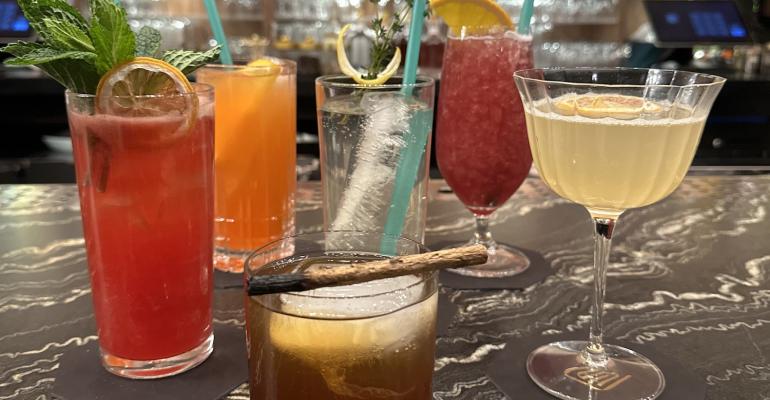I’m not a fan of “Dry January” for several reasons.
From the perspective of restaurant operators, the timing of many people to forego alcohol for a month is bad. January is traditionally slow anyway in most markets as consumers tighten their belts and take stock of their finances after end-of-year splurges.
From a health perspective, if you’re considering abstaining from drinking for a month, maybe a month isn’t enough.
From a personal perspective, I just don’t like being told what to do. Tell me not to drink for a month and I’m likely to double down on my consumption. Also, I like drinking alcohol: It relaxes me and makes me happy.
But many Americans, a surprising number if you ask me, do participate in Dry January. Estimates of how many U.S. drinkers forego alcohol for the month range from 15% to 35%.
And although I, and probably many of you, would prefer that Americans take a break from drinking during busier months —“Sober October” is another option, or the 40 days of Lent, or people could just pick their own time to take a break, maybe March 18 to April 18 — I do think that many people would benefit from cutting back.
While alcohol does make me and many other people happy and has no-doubt contributed to breaking down social barriers and improving many relationships, it has also contributed to the destruction of many others. Alcohol is highly addictive and can result in bad choices ranging from embarrassing text messages to death. It’s also carcinogenic, bad for your liver, and fattening.
As I said, many people who think they should stop drinking for a month probably should consider quitting altogether. On the other hand, taking a break does give you the opportunity to reassess your relationship with alcohol and is a less daunting approach than going cold turkey. In fact, one of my favorite bartenders, who is sober, said she started her non-drinking ways a few years ago with Dry January, discovered she was better off without alcohol overall and has stayed dry ever since. She still does shots with customers, but she shoots pickle juice.
And indeed there are now many socially acceptable options for non-drinkers that also are profitable for restaurateurs. Non-alcoholic beer is part of the regular inventory of many restaurants and bars and, according to an October report in The Wall Street Journal citing Euromonitor data, accounted for 0.9% of beer sales by volume as of September 2023. In Western Europe it accounts for 5.8% of total beer consumption.
There’s also an abundance of alcohol-free wine and zero-proof substitutes for hard liquor, some of which verge on the undrinkable, but a growing number of them are quite tasty.
And bartenders are getting better at making spirit-free cocktails, which is the name I prefer to “mocktails,” because there’s nothing fake or mock-worthy about these drinks, which are given as much time and attention as traditional cocktails.
Here’s a link to what 53 Restaurant, an Asian concept by the Altamarea Group in New York City, was doing with spirit-free cocktails last year.
An example is that restaurant’s Godai, a spirit-free Old Fashioned made with Lyre’s non-alcoholic whiskey infused by 53’s bar staff with house-made corn tea and wheat tea plus some cinnamon and cloves, all to boost its whiskey flavor profile. That’s sweetened with molasses-heavy Okinawa sugar, mixed with zero-alcohol bitters, and served in a glass. with a smoldering licorice root.
Last time I checked 53 charged $16 for it, compared to around $24 for its full-proof cocktails.
That’s in Midtown Manhattan. If you’re in other markets you might consider charging less, obviously.
But other venues have started to charge about as much for zero-proof drinks as they have for high-proof ones, including the Black Lagoon Halloween Pop Up that was held in 18 locations in North America. I went to the New York City preview and all cocktails were listed at $16 regardless of what was in them. That’s fair, since good alcohol substitutes can be pretty costly.
So now restaurants have the tools to make great and highly profitable drinks that a growing number of their customers enjoy and don’t contain booze. If you haven’t reassessed your beverage offerings lately, this could be a good place to start.
Contact Bret Thorn at [email protected]





